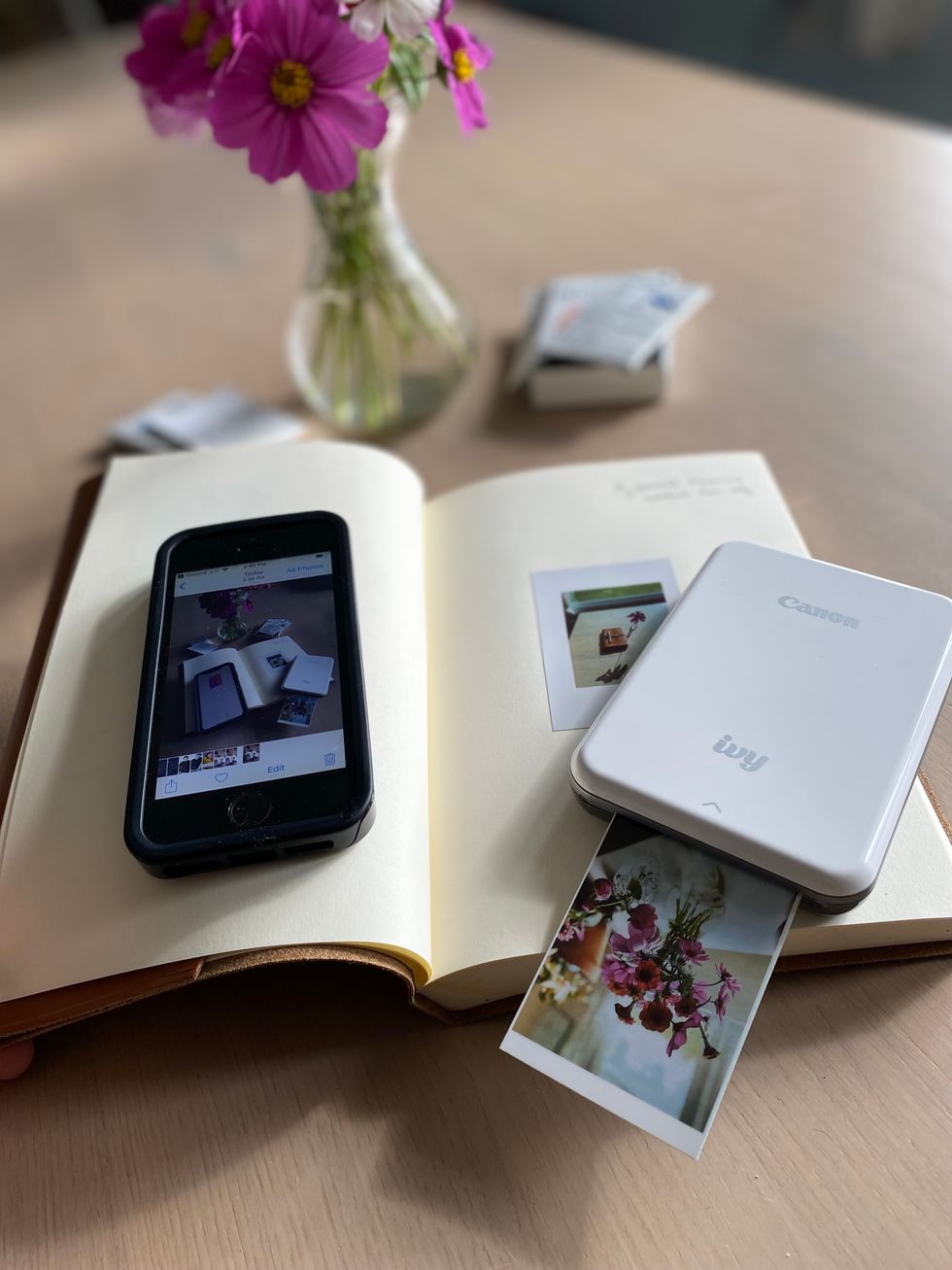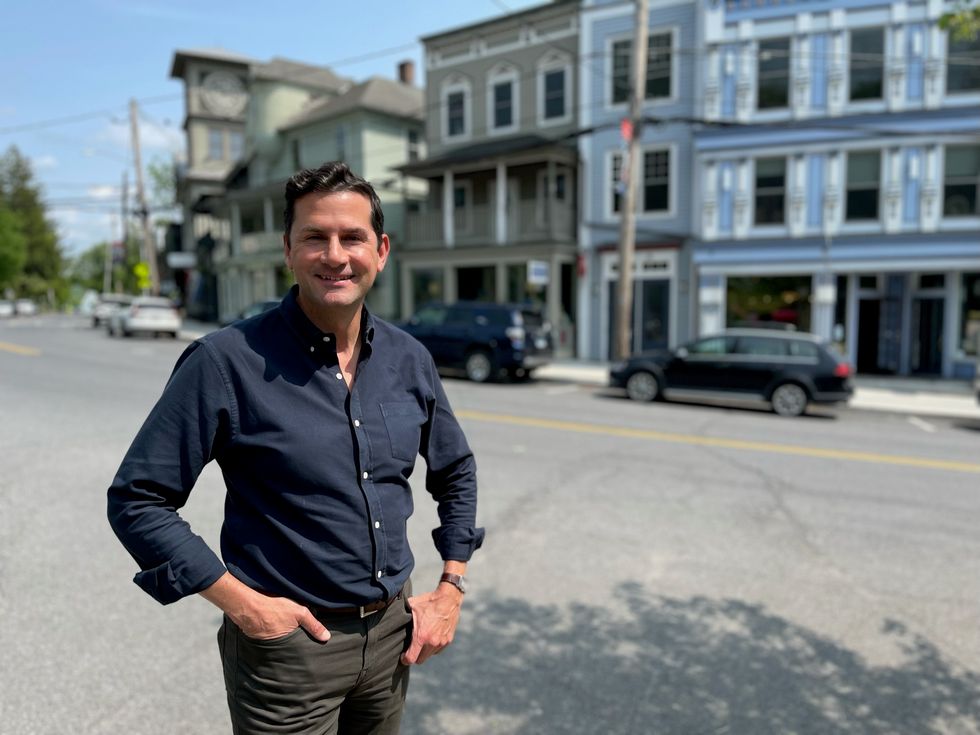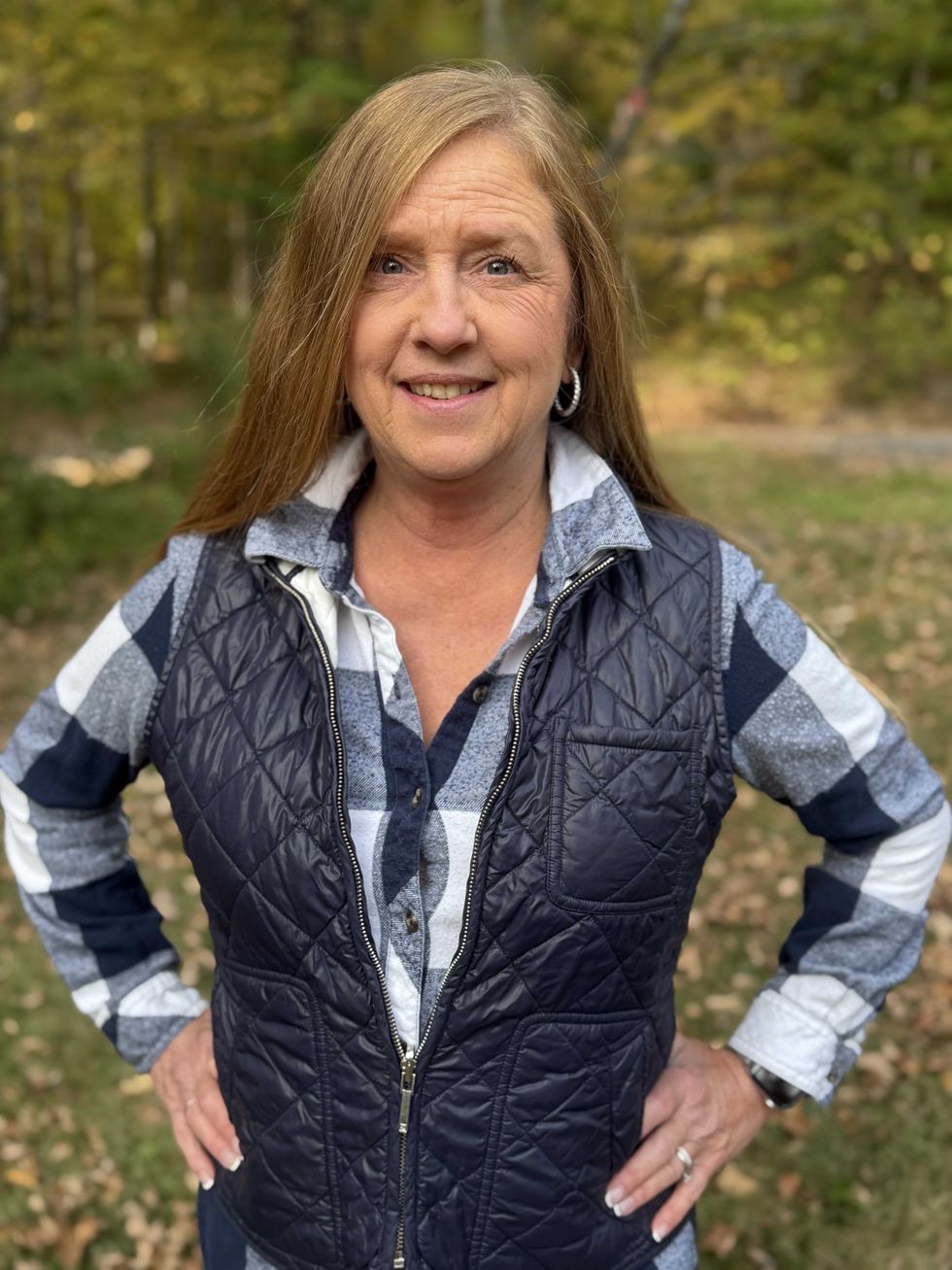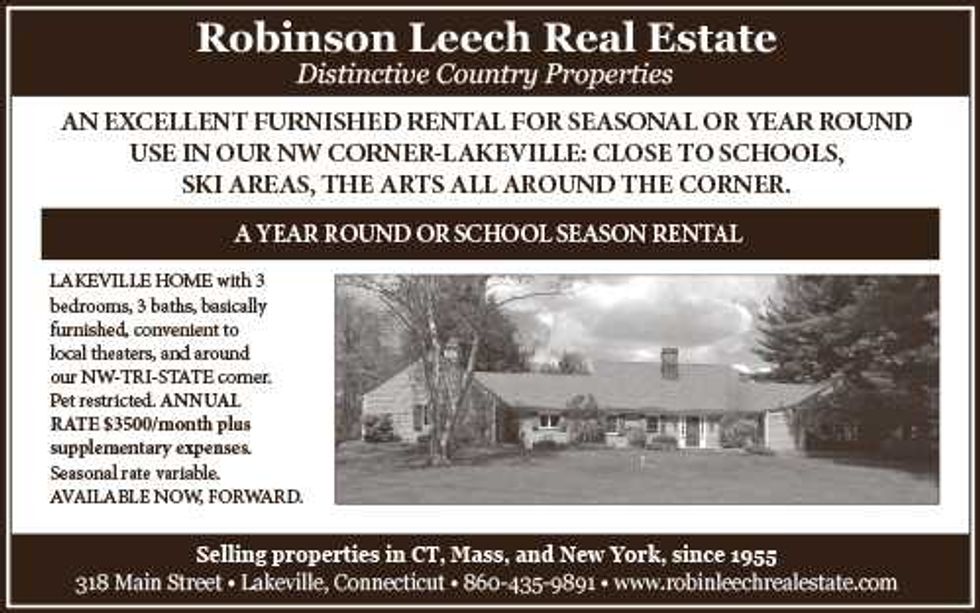For Love of Ivy: My Beloved Mini Printer

An expensive gift becomes less pricey when it’s a gift for everyone in the family. One such option: A mini printer that works with your smart phone.
Photo by Cynthia Hochswender

Here’s an idea for something everyone in the family will love and should in theory be able to share: A Canon Ivy mini printer that works with your smartphone ($98.99).
I bought one a few weeks ago and I’m completely in love with it. I’ve already bought two for friends.
The quality of the images is very good. If you are able to work with your phone camera and do any light editing to make images brighter, darker etc, you will find this printer to be very easy to manage.
This is a no-ink printer (or ZINK, which stands for Zero Ink), so you’re not always fussing with expensive cartridges. The ink is in the paper; but the paper is smooth, not puffy like the old Polaroids.
Each piece of photo paper has a sticker back; the images are small (2 by 3 inches), which is perfect for journaling, keeping a travelogue and doing step-by-step or Final Masterpiece photos of new recipes for your own recipe file.
You can also buy coin-sized pre-cut sticker paper for your printer, perfect for kids to decorate their laptops or schedule books.
A pack of 20 pieces of 2-by-3-inch photo paper is $10; 50 sheets is $24; 20 sheets of sticker paper is $12.
Another brand worth looking into is the Kodak Mini 3 Square 3x3 Retro Portable Printer. As its name suggests, this printer (also known as the P300R) gives you 3-inch-square prints.
There are other models that make different-sized prints. The P210R prints are 3.4 by 2.1 inches, and there is a 4-inch printer called the Dock Plus.
The prices vary, depending on who’s selling them and which model you get. Most of the Canon and Kodak printers usually are sold bundled with some packs of ZINK printer paper. It does make sense to order some paper, so the family can test drive the printer right away (before it gets put in a drawer and is forgotten).
One thing you do need for both these printers is Bluetooth on your phone. The Canon Ivy has a USB cord that allows you to charge it up; the charge seems to hold for a fairly long time (I haven’t yet run out of power). I’m not certain whether the Kodak units can be charged or if they are battery-only.
I’m not a super high-tech person and I found the Canon Ivy stunningly easy to set up and use. If you’re unsure, you can go online and find several YouTube tutorials.
Contested seats in the Dutchess County Legislature are close to home this election season, with Districts 19 and 25 covering the rural towns across the northern and eastern corners of the county. Though the candidates bring distinct experiences and perspectives, they share common ground on some of the biggest challenges facing local communities, including emergency medical services and affordable housing.
Here’s a look at the candidates.

Incumbent Chris Drago is running for re-election at the end of his first term as county legislator. A lifelong Dutchess County resident, Drago said he ran in 2023 after realizing the northern part of the county wasn’t getting the attention it deserved. He unseated longtime incumbent Gregg Pulver and credits his first term with listening to constituents and moving the needle on local priorities.
“I’m interested in being re-elected so that I can keep up the work, continue to be an advocate for the community and to make connections in other areas that the county can’t necessarily help — like at the State or the Federal levels,” Drago said.
Drago recently helped municipalities like North East and Pine Plains access state funds after pushing to secure a $6 million grant for the Plus One ADU program. When the county declined to apply, he worked with Hudson River Housing, which “thankfully applied on behalf of several municipalities across the county.” That funding is now helping middle- and low-income families in the district.
Other key issues for Drago include improving county-wide emergency medical services, housing affordability, mental health access and protecting taxpayer dollars. He has advocated for EMS improvements, calling the county’s $2 million investment in supplemental services a “drop in the bucket” and a “Band-aid solution,” and he plans to push for a long-term fix. On mental health, Drago has helped coordinate advocacy that contributed to funding for an expanded Rhinebeck facility. “It’s a step in the right direction thanks to folks in the community being vocal and us working together to shine a light on this issue.”
Drago said he was elected in 2023 because voters wanted new leadership in northern Dutchess.
“I bring independence, transparency and a deep commitment to public service without strings attached,” he said. “I answer only to the people of District 19. I bring a proven track record of collaboration and a willingness to ask tough questions when taxpayer dollars or community needs are at stake.”
Emphasizing community over politics, Drago said, “I am not about one party over another. I’m about community, not politics. I can talk to anyone who’s willing to meet me halfway and who wants to be part of the solution. I really enjoy getting out and helping people.”

School psychologist Tonya Pulver, who works in the Millbrook Central School District, is seeking to unseat Democratic incumbent Chris Drago.
“No one was running against my opponent, and I’m a firm believer that a lot of people died for our right to vote, and we should also have a right to a choice,” she said. “If I’m going to be the one complaining, I should be the one doing something. So, here I am.”
Pulver said her background as a school psychologist gives her a perspective she plans to bring to the legislature. “I listen to people for a living, I take their perspectives and problem-solve. That’s my life, that’s what I do, and that’s what I will bring to the legislature,” she said.
She emphasized that her approach is nonpartisan. “I’m not political, it’s not about blue and it’s not about red, it’s about what’s best for our communities,” Pulver said.
Pulver’s top priorities include children’s mental health, housing affordability and emergency medical services. She noted that Dutchess County currently lacks pediatric psychiatric beds, forcing children to travel to Westchester for care. She also wants to increase funding for programs that educate vulnerable populations about the nuances of home-buying, and inspire developers to expand affordable housing in rural Dutchess County. “Rental costs are way overpriced. Supply and demand is out of control. We need more housing so that people who grew up here can continue to live here,” she said.
On EMS, Pulver said response times in District 19 are a challenge, though to be expected in rural areas. “District 19 needs to figure out as a whole what they need to do. There needs to be a multi-faceted approach that combines paid services and volunteers,” she said.
Pulver describes herself as a “fixer” and a doer. She cites her experience balancing full-time work and undergraduate and graduate school, along with volunteer work with Tails of the Tundra Siberian Husky Rescue and the Center for the Prevention of Child Abuse, as evidence of her ability to tackle complex challenges.
“I want to go in there and see some positive changes for our area,” Pulver said. “I plan on making calls, finding out what people’s concerns are, and taking their needs to the legislature. We can make improvements when we work together.”

After nearly a decade in public service, Republican incumbent Dierdre Houston is seeking re-election.
Houston is finishing her fourth two-year term and currently serves as Majority Leader of the Legislature.She spent seven years on the Millbrook Board of Education prior to joining county government, which she described as “an important entry point into public service.”
“Being on the school board gave me a foundation in budgeting, contracts and negotiations,” she said. “But the county is on another level — bigger budgets, more people and a larger chain of command. It took a couple of years to really learn how to ask the right questions and get things done.”
Throughout her tenure, Houston has held several leadership positions, including Chair of the Government Services and Administration Committee and Assistant Majority Leader. She said she takes pride in being a visible, engaged legislator who regularly attends town board meetings across her district.
“If I’m not in conflict with another obligation, I’m there,” she said. “It’s important to know what’s happening locally so I can advocate effectively at the county level.”
A small business owner, Houston has run her Millbrook flower shop since 2013. She said strong organization and work ethic help her balance both roles. “I’m fortunate to have staff who support me, but I also put in long days. I believe in showing up and doing the work,” she said.
Houston identified emergency medical services, workforce housing and support for seniors and veterans as the top issues facing her district. “We’ve made progress on EMS response times, but funding remains a challenge,” she said, adding that “throwing money at a problem is not solving a problem, it’s about doing things in a responsible comprehensive way that is equitable to everyone, whether you live in remote areas or the populous areas.”
Houston added that “affordable and workforce housing also continue to be pressing needs, especially in small towns like Amenia and Millbrook.”
She said serving in government has given her the opportunity to make tangible differences, adding that “experience” is one of the main reasons to vote for her.
“When someone brings me a problem and I can help solve it — that’s what drives me,” she said. “I’ve built strong relationships, I know how to navigate the system, and I care deeply about this community.”

Eric Alexander, an experienced leader in marketing, finance and public service, is challenging incumbent Dierdre Houston.
Alexander said he was encouraged to run because he believes the Legislature needs “fresh energy, more transparency and a greater sense of accountability to residents.” He emphasized that his focus is on results, not rhetoric. “It’s frustrating for me when I can’t get something done,” he said. “You can either say you can’t, or you can make it happen.”
A seasoned leader in both the private and nonprofit sectors, Alexander serves as chair of the board of trustees at Emerson College. “When I was asked to chair the board, I was told that changing things in college is like moving a cemetery — you just can’t do it,” he said. “But in three years, we’ve hired a new president, written new bylaws, created a new strategic plan and even launched a new school. Everything that colleges need to do to remain viable — we’ve done it.”
As chair, Alexander said he shares responsibility for a $350 million operating company and a $300 million endowment. “I know every line of that budget — how to find the fat, how to find the waste — and how to act on priorities,” he said.
Alexander’s top priorities include addressing the county’s EMS crisis, improving public transportation and expanding housing affordability. “There’s nothing ideological about EMS. Everyone needs medical care,” he said, adding that “our rural communities need a different understanding of what our needs are and what’s reasonable for us.”
He criticized the county’s 2024 EMS investment as “a Band-Aid,” and said his first step would be to bring legislative representatives to Amenia, Millbrook and Pleasant Valley to meet with local officials directly.
Alexander expressed concern that without adequate transportation, District 25 residents have serious challenges getting to critical appointments and obligations. He asked, “Amenia is part of Dutchess County — why are we cut off from the rest of it?”
Housing, said Alexander, must also be treated as a regional priority. “The lack of housing is pushing young people out,” he said. “When young people look to Ulster County to find a home, that’s failure.”
Summing up his candidacy, Alexander said, “I bring professional experience on Wall Street and Madison Avenue, combined with years of community service. I’m doing this to win — and to move the legislature toward doing things differently.”
Weatogue Stables has an opening: for a full time team member. Experienced and reliable please! Must be available weekends. Housing a possibility for the right candidate. Contact Bobbi at 860-307-8531.
Hector Pacay Service: House Remodeling, Landscaping, Lawn mowing, Garden mulch, Painting, Gutters, Pruning, Stump Grinding, Chipping, Tree work, Brush removal, Fence, Patio, Carpenter/decks, Masonry. Spring and Fall Cleanup. Commercial & Residential. Fully insured. 845-636-3212.
SNOW PLOWING: Be Ready! Local. Sharon/Millerton/Lakeville area. Call 518-567-8277.
PUBLISHER’S NOTICE: Equal Housing Opportunity. All real estate advertised in this newspaper is subject to the Federal Fair Housing Act of 1966 revised March 12, 1989 which makes it illegal to advertise any preference, limitation, or discrimination based on race, color religion, sex, handicap or familial status or national origin or intention to make any such preference, limitation or discrimination. All residential property advertised in the State of Connecticut General Statutes 46a-64c which prohibit the making, printing or publishing or causing to be made, printed or published any notice, statement or advertisement with respect to the sale or rental of a dwelling that indicates any preference, limitation or discrimination based on race, creed, color, national origin, ancestry, sex, marital status, age, lawful source of income, familial status, physical or mental disability or an intention to make any such preference, limitation or discrimination.

On Thursday, Oct. 30, from 5:30 to 7 p.m., the Norfolk Library will host a free public screening of “Tiananmen Tonight,” a film by Bestor Cram and Michael Streissguth about the 1989 student uprising in China and the daring coverage by Dan Rather and CBS. Director Cram will introduce the film.
A documentary filmmaker whose life was forged in the fire of Vietnam, where he served as a Marine, Cram earned the Navy Commendation Medal. He returned home to become a conscientious objector and leader of Vietnam Veterans Against the War. After working in the MIT Film Studies Program, he founded Northern Light Productions in Boston, producing media for museums, and has made more than 30 feature documentary films.
His credits include the 1995 Academy Award-winning documentary “Maya Lin: A Strong Clear Vision,” as well as “After Innocence and Wrestling with Angels: Playwright Tony Kushner.” His film “Unfinished Symphony,” premiered at the 2001 Sundance Film Festival.
JA: When did you begin telling stories?
BC: I began my filmmaking adventure as an organizer for Vietnam Veterans Against the War. I arranged for a group of filmmakers to document our march, which followed the ride of Paul Revere in reverse, a warning to folks to become patriots and oppose the war.
JA: How does our current political and moral dilemma, with journalism under fire, inform this film?
BC: The film is about a momentous event that became a defining example of how television journalism lived up to its promise, providing in-depth, ongoing reporting that enabled an audience to understand the evolution of a news story. It provides insight into the decisions journalists face in dealing with management, restrictive budgets, governmental impediments, and the dilemmas that arise when reporters become part of the news.
JA: What drew you to the story of Dan Rather and CBS in China?
BC: Dan Rather and his team were in a ratings fight, but more importantly, they were fighting to reestablish their reputation as the gold standard in TV journalism.
JA: How can we protect our free press?
BC: The bottom line rules capitalism. When corporations become owners of the press, they no longer view news as a public service but as another commodity on the balance sheet. I believe the best way to protect the free press is to limit who owns it.
JA: What is the role of the press, and of film, in truth-telling?
BC: The role of the press is to inform. The role of film is also to inform, but its format is essentially an editorial perspective. Telling the truth is more a process of what is chosen to be presented and its sources.
JA: How do you define bravery?
BC: Bravery is the notion of expressing oneself physically and intellectually based on one’s conscience, kind of a Henry David Thoreau ideal. Following the law is part of citizenship, but ensuring the justness of the law is also part of citizenship.
JA: Do you think China is more or less repressive now than in 1989?
BC: Economically, people are better off. But the price paid for not contesting the Chinese totalitarian regime is one of accepting the repression of free speech and the rewriting of history.
JA: What do you want people to take away from this film?
BC: Appreciation for the quality and courage of the journalists who reported Tiananmen, and a consideration of what is being done in TV journalism today. And a reexamination of the stand the Chinese took then as an inspiration for how movements today can shape change, knowing that there are consequences to be considered when dealing with governments.
JA: What is your current project?
BC: A feature documentary called “Not Your Average Citizen,” the story of Boris Nemtsov, leader of the Russian opposition and critic of Vladimir Putin, who was gunned down outside the Kremlin in February 2015. As Nemtsov often said, “Freedom comes at a high price.”
More at notyouraveragecitizen.com.
Register at norfolklibrary.org
Abstract artist Vincent Inconiglios' love and enthusiasm for color and form are evident all around him at his Falls Village studio, where he has worked for 25 years. He is surrounded by paintings large and small, woodcuts, photographs, collages and arrays of found objects.
The objects Inconiglios has found while out walking — in Falls Village, near his studio on Gansevoort Street in New York City, and in other places throughout the world — hold special importance to him. Appreciation of them, he says, comes from “seeing while exploring. I am always finding things.” His particular delight is finding objects that look like faces, many of which will be featured in the ArtWall show at the Hunt Library.
The found objects inspire him, are his “friends,” and serve as muses for his work. He has had some in his collection for more than 50 years. “I’ve always thought of them as parts of me.”
As he shows these objects and tells how he found them, his enthusiasm is contagious. It suggests a new way of looking at the world, even at the most mundane bits of debris.
The sheer volume of paintings and collages displayed in his Falls Village studio attests to his interest in form, color, and composition.
Inconiglios will bring his sense of play and love of discovery to his show, “Face Time,” opening at the Hunt Library in Falls Village on Oct. 25, with a reception from 5 to 7 p.m. It features faces in collages, photos, and found objects. The works will be on display until Nov. 21.
Inconiglios explained a little about his process. “If I am stuck,” he said, “I’ll cut something and put it down. One thing leads to another and forces me to focus.” Next month, in a workshop with children, he will share techniques like this that have guided him in his work.
The children, students at Lee H. Kellogg School in Falls Village, will create their own face collages. Inconiglio enjoys the spontaneity children bring to their creations and is eager to work with them.
On Nov. 13, Inconiglio will give an artist’s talk at 5:30 p.m. at Hunt Library.
He looks forward to feedback about “Face Time,” commenting, “I’d rather get bad feedback than no feedback.”
For more information, visit: huntlibrary.org/art-wall/.